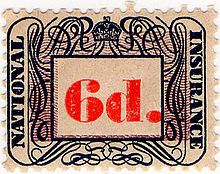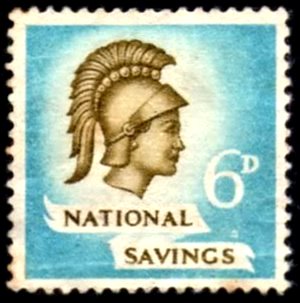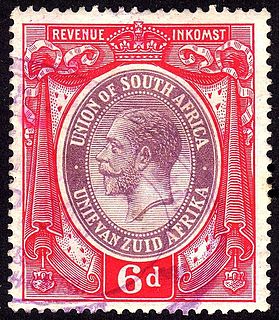This page is based on this
Wikipedia article Text is available under the
CC BY-SA 4.0 license; additional terms may apply.
Images, videos and audio are available under their respective licenses.

The Inland Revenue was, until April 2005, a department of the British Government responsible for the collection of direct taxation, including income tax, national insurance contributions, capital gains tax, inheritance tax, corporation tax, petroleum revenue tax and stamp duty. More recently, the Inland Revenue also administered the Tax Credits schemes, whereby monies, such as Working Tax Credit (WTC) and Child Tax Credit (CTC), are paid by the Government into a recipient's bank account or as part of their wages. The Inland Revenue was also responsible for the payment of child benefit.

The Department of Posts (DoP), trading as India Post, is a government-operated postal system in India under the Department of Posts, which is part of the Ministry of Communications of the Government of India. Generally called "the post office" in India, it is the most widely distributed postal system in the world.

India has been a heavy user of revenue stamps, both before and after independence. The first revenues were issued in the mid-nineteenth century and they are still being issued to this day. Apart from issues for the whole of India, many princely states, provinces and other states also had or still have their own revenue stamp issues.
The Board of Inland Revenue Stamping Department Archive in the British Library contains artefacts from 1710 onwards, and has come into existence through amendments in United Kingdom legislation.
The Davies Collection is a collection of Libyan revenue stamps from 1955 to 1969, formed from material from the Bradbury Wilkinson Archive, and presented to the British Library Philatelic Collections by John N. Davies in 1992.

Revenue stamps of Malta were first issued in 1899, when the islands were a British colony. From that year to 1912, all revenue issues were postage stamps overprinted accordingly, that was either done locally or by De La Rue in London. Postage stamps also became valid for fiscal use from 1912 to 1913, so no new revenues were issued until 1925–30, when a series of key type stamps depicting King George V were issued. These exist unappropriated for use as general-duty revenues, or with additional inscriptions indicating a specific use; Applications, Contracts, Registers or Stocks & Shares. The only other revenues after this series were £1 stamps depicting George VI and Elizabeth II. Postage stamps remained valid for fiscal use until at least the 1980s.
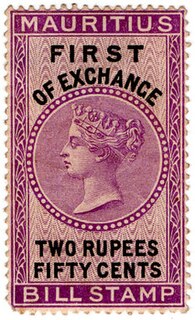
Mauritius issued revenue stamps from 1 March 1869 to 1904. There were various types of fiscal stamps for different uses.

Revenue stamps of Ireland refer to the various revenue or fiscal stamps, whether adhesive, directly embossed or otherwise, which have been used on the island of Ireland since 1774. These include issues by the Kingdom of Ireland, issues by the United Kingdom specifically for use in Ireland or briefly Southern Ireland, and issues of an independent southern Ireland since 1922. Revenue stamps of Northern Ireland were also issued from 1921 to the 1980s, but they are not covered in this article.

Pakistan first issued revenue stamps when it became independent in 1947 and continues to issue revenues to this day. In addition to national issues, the provinces of Balochistan, North West Frontier, Punjab, Sindh, as well as Azad Jammu and Kashmir, West Pakistan and the capital Islamabad also have or had their own stamps.
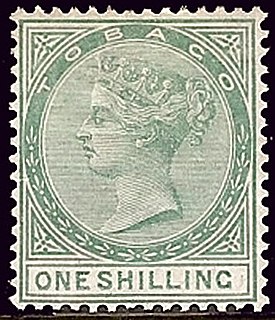
Trinidad and Tobago, formerly divided as two separate colonies, issued revenue stamps from 1879 to around 1991.

The British colony of Bermuda issued revenue stamps from 1936 to 1984.
Bangladesh first issued revenue stamps in 1972, the year after independence, and continues to do so to this day. Previously Bangladesh used revenues of India from the 19th century to 1947, and those of Pakistan from 1947 to 1971. From 1921 to 1947 various Indian revenues were overprinted BENGAL for use in modern Bangladesh and West Bengal.
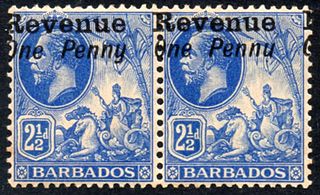
The island of Barbados first issued revenue stamps in 1916. There were various types of fiscal stamps for different taxes.

Kenya, formerly known as British East Africa issued revenue stamps since 1891. There were numerous types of revenue stamps for a variety of taxes and fees. Also valid for fiscal use in Kenya were postage stamps issued by the following entities:
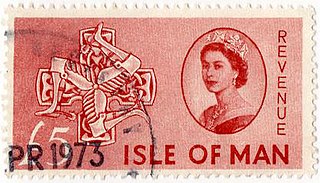
Revenue stamps of the Isle of Man refer to the adhesive revenue or fiscal stamps which were issued by the British Crown dependency of the Isle of Man between 1889 and 1976. British key type revenue stamps with an appropriate inscription were issued on the island until 1966, when revenue stamps showing various scenes and symbols of the island began to be issued. The last set of stamps was issued in 1976. From around 1920 to the 1970s, hundreds of contribution stamps were issued for National Insurance and related schemes.
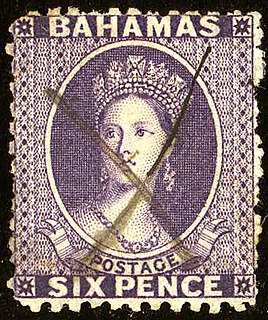
Very few revenue stamps of the Bahamas have been issued, as most of the time dual-purpose postage and revenue stamps were used for fiscal purposes. They were used as such from around the 1860s to at least the 1950s. A couple of revenue-only impressed duty stamps embossed in vermilion ink are known used in the 1950s. Similar stamps but with colourless embossing might also exist.
